When renting a property, tenants often provide a security deposit to the landlord as a form of insurance against potential damages or unpaid rent. However, there may be situations where the tenant feels the need to request the return of their security deposit.
In such cases, a security deposit demand letter can serve as a written notice of the tenant’s intent to receive the deposit and a final attempt to resolve the matter amicably before potentially resorting to legal action.
What is a Security Deposit Demand Letter?
A security deposit demand letter is a formal written document that a tenant can use to request the return of their security deposit from the landlord.
It serves as a final communication before considering legal action and aims to resolve any issues or disputes regarding the security deposit in a peaceful manner.
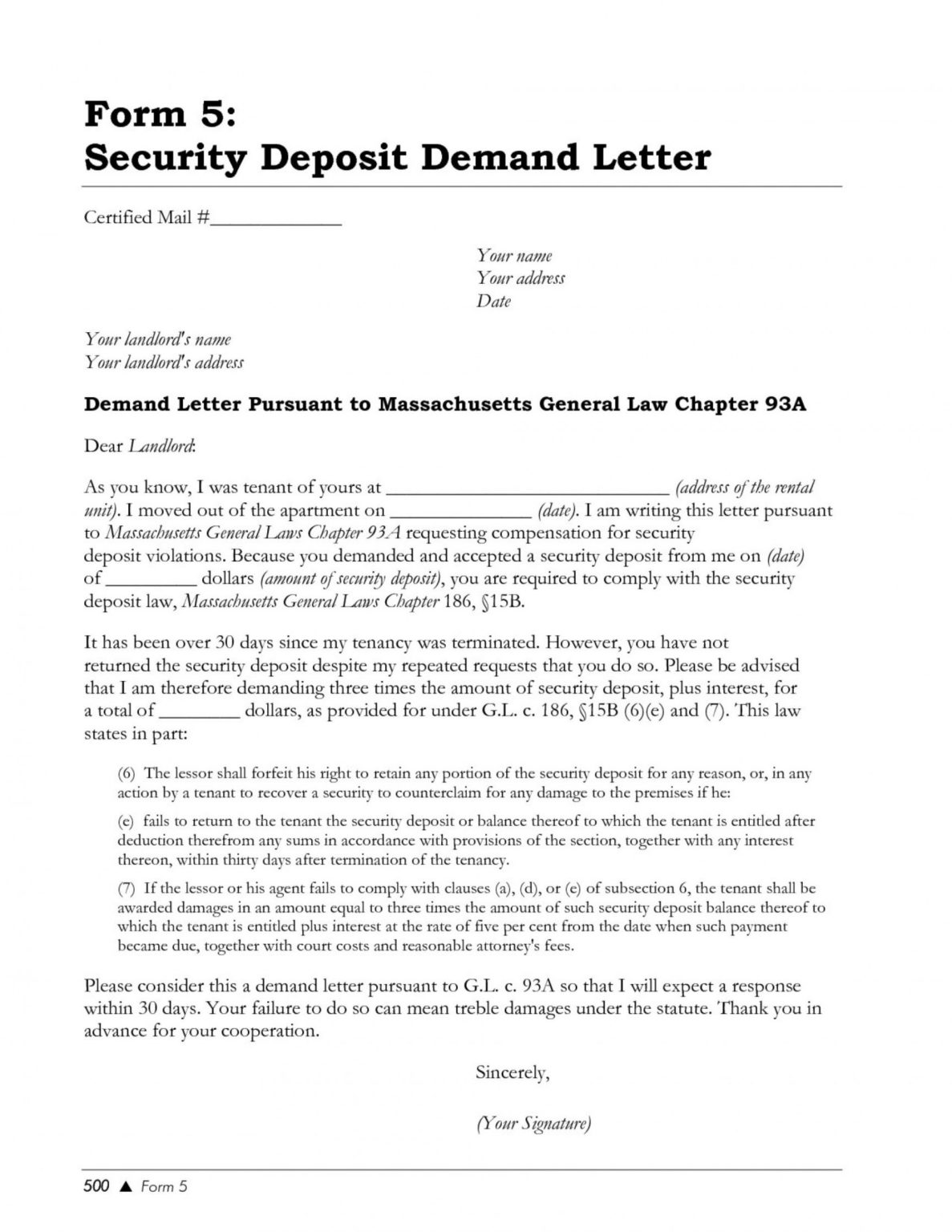
Why Should You Use a Security Deposit Demand Letter?
Using a security deposit demand letter can be beneficial for both tenants and landlords. For tenants, it provides a clear and formal way to communicate their intent and expectations regarding the return of their security deposit. It also serves as evidence in case legal action becomes necessary.
For landlords, a security deposit demand letter shows that the tenant is serious about resolving the matter and allows them to address any concerns or issues before facing legal proceedings. It can help landlords maintain a positive relationship with their tenants and avoid unnecessary legal expenses.
How to Write a Security Deposit Demand Letter
Writing a security deposit demand letter may seem intimidating, but it doesn’t have to be. Here are some steps to help you write an effective letter:
- Gather all necessary information: Before writing the letter, make sure you have all the relevant details, such as the date the tenancy ended, the amount of the security deposit, and any deductions made by the landlord.
- Use a professional tone: Maintain a professional and neutral tone throughout the letter. Avoid using aggressive language or making personal attacks.
- Clearly state your intent: Begin the letter by clearly stating your intent to request the return of your security deposit. Be specific about the amount you are expecting and the reasons for your request.
- Provide supporting evidence: If there are any damages or deductions made by the landlord, provide evidence to support your claim. This could include photographs, receipts, or any other relevant documents.
- Propose a resolution: To resolve the matter amicably, suggest a reasonable resolution. This could involve a partial refund, an agreement to repair damages, or any other fair solution.
- Set a deadline: Clearly state a deadline for the landlord to respond and resolve the issue. This will help you take further action if necessary.
- Keep a copy: Make sure to keep a copy of the letter for your records. If possible, send the letter via certified mail or email to have proof of delivery.
Examples of Security Deposit Demand Letters
Here are a few examples of how a security deposit demand letter can be structured:
Example 1:
[Your Name]
[Your Address]
[City, State, Zip]
[Date]
[Landlord’s Name]
[Landlord’s Address]
[City, State, Zip]
Dear [Landlord’s Name],
I hope this letter finds you well. I am writing to formally request the return of my security deposit in the amount of [Amount]. The tenancy for [Property Address] ended on [End Date], and I have fulfilled all of my obligations as a tenant.
During my tenancy, I took great care of the property and ensured that it was returned in the same condition as when I moved in. I have attached photographs that clearly show the condition of the property before and after my tenancy, demonstrating that no damages were caused by me.
I kindly request that you return my security deposit in full within [Deadline]. If any concerns or issues need to be addressed, please let me know, and I am more than willing to discuss them and find a fair resolution.
I look forward to hearing from you soon and resolving this matter amicably.
Sincerely,
[Your Name]
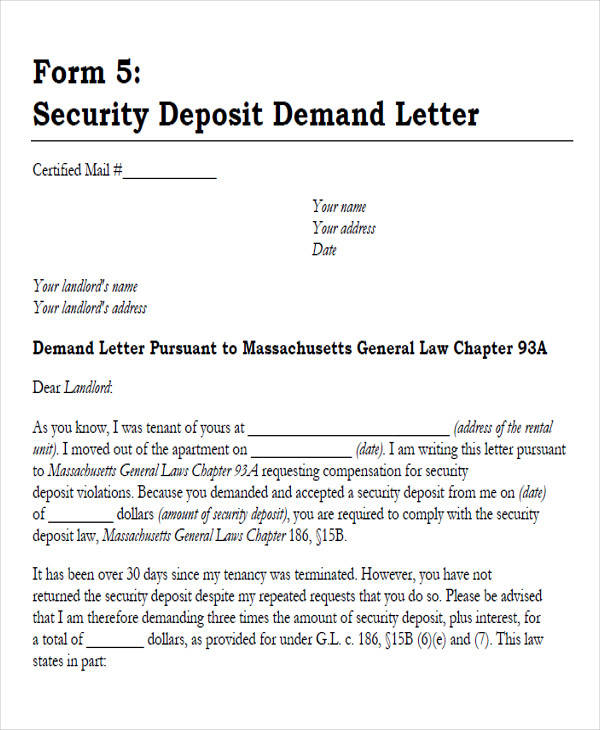
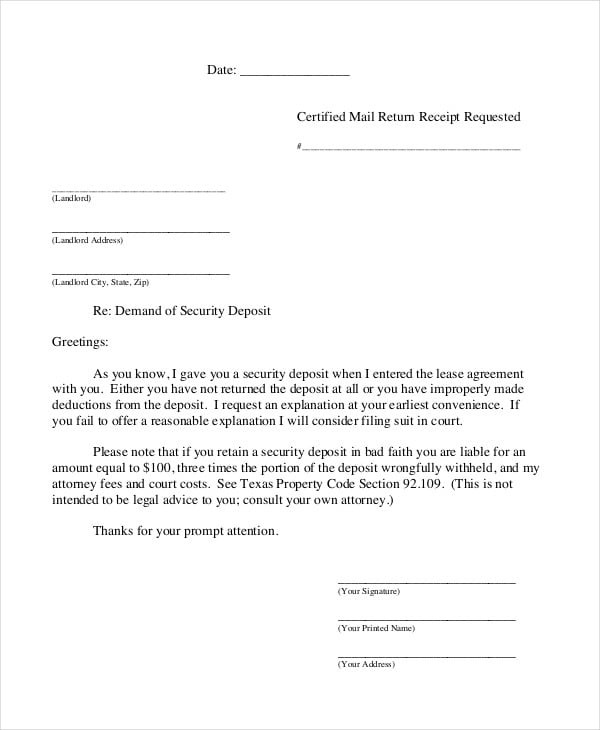
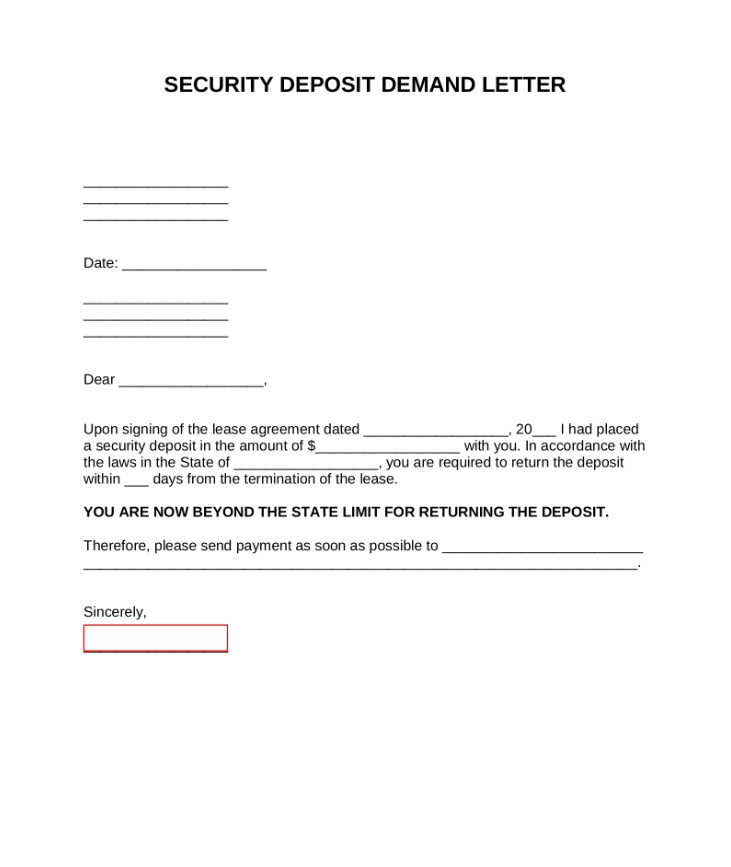
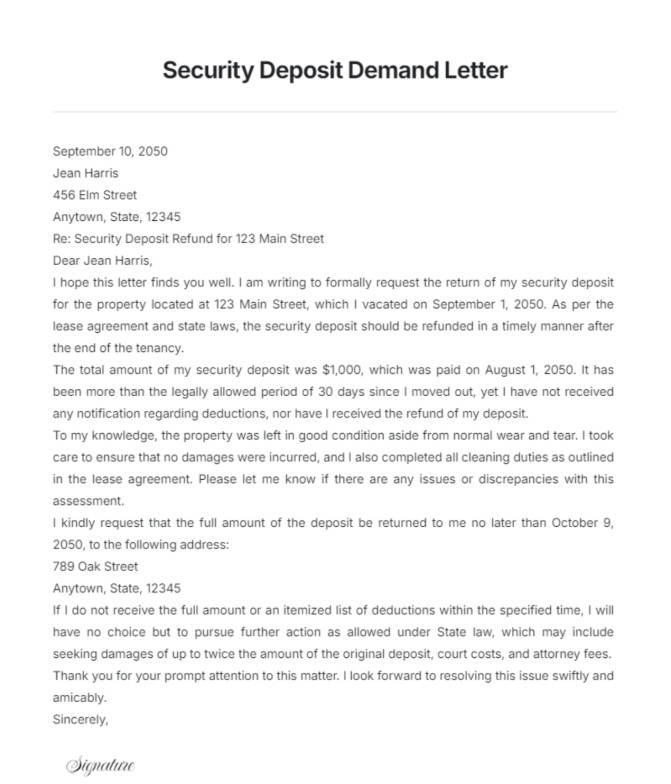
Tips for a Successful Security Deposit Demand Letter
Writing a successful security deposit demand letter involves careful consideration and attention to detail. Here are some tips to help you create an effective letter:
- Be concise and specific: Clearly state your request and include all relevant details, such as dates, amounts, and any supporting evidence.
- Stay professional: Maintain a neutral and professional tone throughout the letter. Avoid being confrontational or emotional.
- Keep copies of all communication: Make sure to keep copies of all written communication, including the demand letter and any responses from the landlord.
- Follow up if necessary: If you don’t receive a response within the specified deadline or if the issue remains unresolved, consider seeking legal advice or taking further action.
Conclusion
A security deposit demand letter can be a valuable tool for tenants who wish to request the return of their security deposit. By following the steps outlined in this article and using a professional and respectful tone, tenants can effectively communicate their intent and expectations to their landlords.
Remember to keep copies of all communication and be prepared to take further action if necessary.
Security Deposit Demand Letter Template – Download